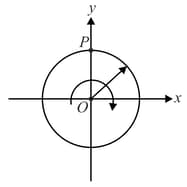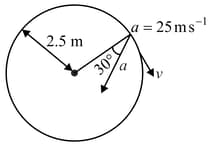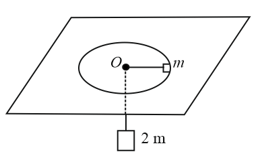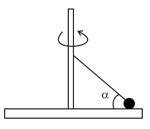Embibe Experts Solutions for Chapter: Circular Motion, Exercise 3: Exercise-3
Embibe Experts Physics Solutions for Exercise - Embibe Experts Solutions for Chapter: Circular Motion, Exercise 3: Exercise-3
Attempt the practice questions on Chapter 7: Circular Motion, Exercise 3: Exercise-3 with hints and solutions to strengthen your understanding. Beta Question Bank for Engineering: Physics solutions are prepared by Experienced Embibe Experts.
Questions from Embibe Experts Solutions for Chapter: Circular Motion, Exercise 3: Exercise-3 with Hints & Solutions
A ring rotates about axis as shown in figure. The plane of rotation is . At a certain instant the acceleration of a particle (shown in figure) on the ring is . Find the magnitude of angular acceleration in . Radius of the ring is .

A particle is performing circular motion of radius . Its speed is . What will be magnitude of its acceleration in at .
A particle moves clockwise in a circle of radius with centre at . It starts at rest at the origin at time . Its speed increases at the constant rate of . How long does it take to travel halfway around the circle in second?
Figure shows the total acceleration and velocity of a particle moving clockwise in a circle of radius at a given instant of time. At this instant. Find the radial acceleration in .

A mass rotating freely in a horizontal circle of radius on a frictionless smooth table supports a stationary mass , attached to the other end of the string passing through smooth hole in table, hanging vertically. Find the angular velocity of rotation.

A circular platform rotates around a vertical axis with angular velocity . On the platform is a ball of mass , attached to the long axis of the platform by a thin rod of length . Find normal force exerted by the ball on the platform (in newton). Friction is absent.

An aircraft executive a horizontal loop at a speed of with its wings banked at . What is the radius of the loop?
A particle of mass is rotating in a circle of radius such that the angle rotated by its radius is given by . If the net force acting on the particle when is , then the find the value of in .
